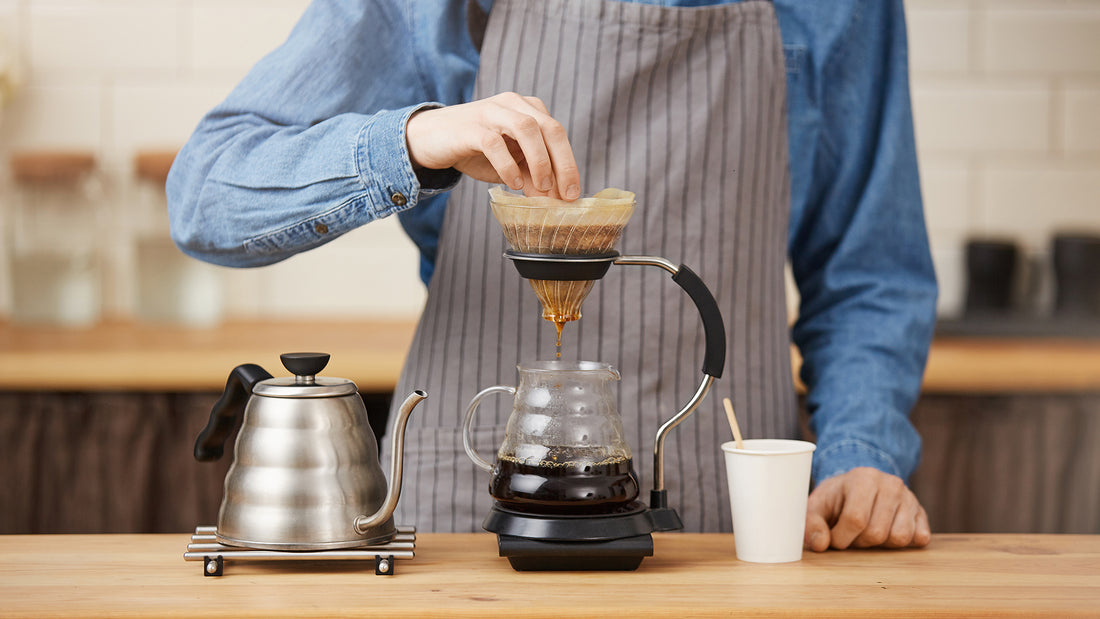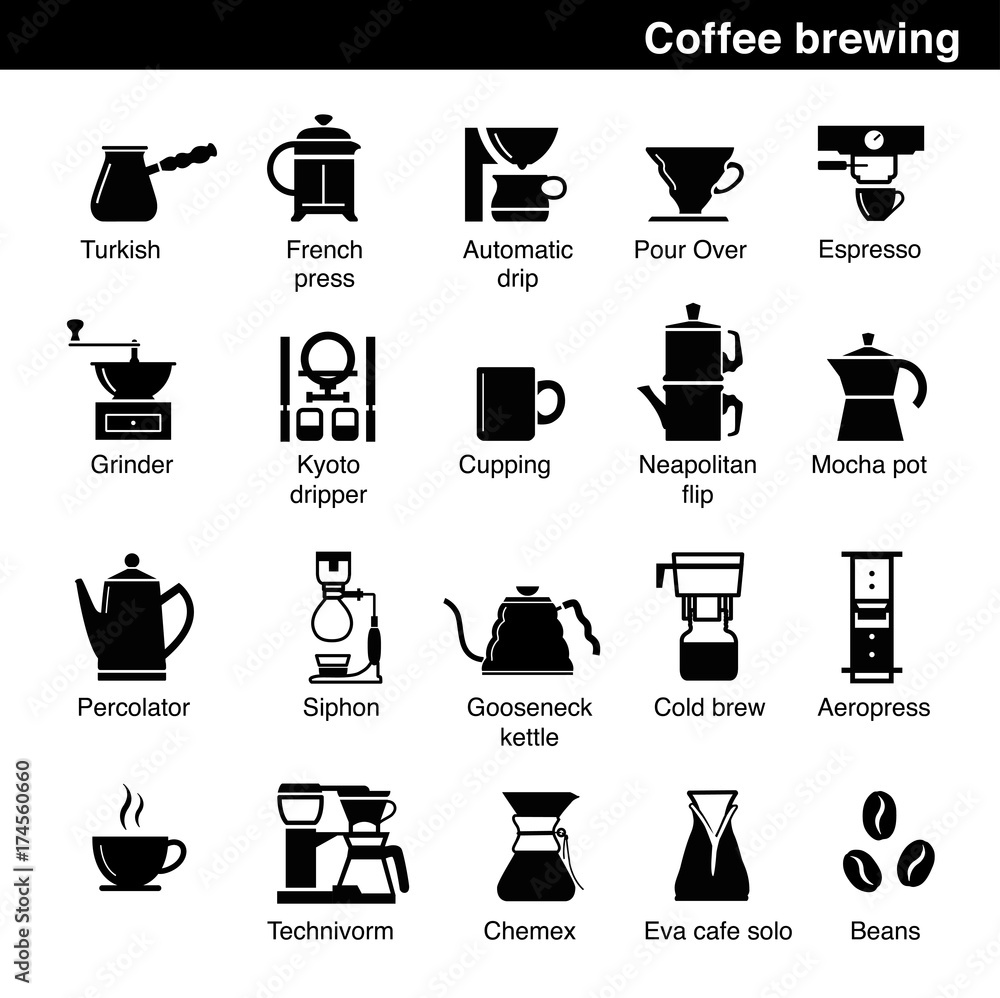Coffee Brewing Methods Debunked: From French Press to Cold Brew
Coffee Brewing Methods Debunked: From French Press to Cold Brew
Blog Article
The Science Behind Coffee Developing: Just How Temperature and Time Affect Your Beverage
Understanding the science behind coffee brewing exposes that temperature and time are not mere variables but crucial components that determine the beverage's taste account and total top quality. As we explore the nuances of these components, the concern develops: exactly how can one properly equilibrium temperature and time to achieve that best mixture?
The Chemistry of Coffee Removal
The chemistry of coffee extraction digs right into the elaborate procedures that change raw coffee beans into the fragrant beverage delighted in worldwide. This makeover mainly entails the solubility of various compounds existing in the beans, which are affected by factors such as work size, water top quality, and the brewing technique used.
Throughout the developing procedure, hot water acts as a solvent, extracting soluble compounds, including high levels of caffeine, sugars, lipids, and acids, from the coffee premises. Each compound adds to the taste account, aroma, and body of the final drink. For example, acids are accountable for appetizing and bright notes, while oils add to a rich mouthfeel.
The removal procedure is not uniform; different substances liquify at various prices. The first phases of brewing essence acids and sugars, leading to an enjoyable level of acidity, while long term removal can cause resentment because of over-extraction of unfavorable substances. Comprehending these chemical interactions is vital for optimizing developing techniques, as the equilibrium between extraction time and water temperature level can considerably influence the general quality of the coffee. Eventually, grasping the chemistry of coffee removal is crucial to attaining a delicious and all-round cup.
Perfect Developing Temperatures
Discovering the appropriate brewing temperature level is necessary for unlocking the full potential of coffee tastes and fragrances - coffee brewing methods. Research shows that the optimum array for brewing coffee exists in between 195 ° F to 205 ° F(90 ° C to 96 ° C) Within this range, the extraction procedure efficiently dissolves the preferable soluble compounds in coffee beans, bring about a tasty and balanced mug
Developing at lower temperature levels, such as below 195 ° F(90 ° C ), might cause under-extraction, yielding an acidic and weak brew with low-key tastes. Alternatively, developing at temperatures exceeding 205 ° F(96 ° C) can cause over-extraction, creating a harsh and bitter preference because of the too much dissolution of undesirable substances, such as tannins.
In addition, the excellent brewing temperature level can vary depending upon the coffee bean kind and roast degree. Lighter roasts typically benefit from slightly greater temperatures to boost their complex flavor profiles, while darker roasts may be better matched to reduced temperature levels to alleviate bitterness.
Ultimately, preserving precision in developing temperatures is vital for accomplishing a harmonious balance of flavors, ensuring that every cup of coffee provides a rewarding sensory experience.
Effect of Developing Time
Developing time plays a pivotal function in figuring out the flavor profile and general top quality of coffee. Much shorter developing times can result in under-extraction, leading to a sour or weak flavor, as not adequate soluble compounds are liquified.
Optimal brewing time varies relying on the approach made use of and the work size of the coffee. For circumstances, a French press generally calls for about four mins, while coffee removal is generally finished within 25 to 30 seconds. It is important to calibrate developing time in conjunction with other variables, such as water temperature level and coffee-to-water ratio, to these details achieve the preferred taste account.
Comprehending the influence of brewing time enables coffee lovers to refine their brewing methods, inevitably boosting the sensory experience of their mug (coffee brewing methods). With careful focus to this variable, one can unlock the complete possibility of the coffee, disclosing its one-of-a-kind qualities and nuances
Brewing Methods and Their Results

For example, techniques like French press and cold brew allow for a much longer steeping time, causing a fuller body and robust taste due to boosted removal of oils and soluble solids. On the other hand, espresso developing utilizes high stress and a much shorter removal time, generating a concentrated shot that emphasizes intense tastes and an abundant crema.
Pour-over methods, such as Chemex or V60, provide an even more regulated removal procedure, enabling the brewer to manipulate flow rate and water distribution, which can boost illumination and quality. Percolation methods cycle water through the coffee grounds several times, leading to a more powerful, commonly bitter flavor.
Finally, special info the use of paper filters versus metal filters can also influence the final taste; paper filters usually generate a cleaner cup by trapping oils and great fragments, while steel filters enable even more oils to pass through, adding to a fuller mouthfeel - coffee brewing methods. Comprehending these nuances can raise the coffee experience dramatically
Tips for Perfecting Your Mixture
A well-executed mixture can transform also the easiest coffee into a remarkable experience. To accomplish this, interest to information is essential. Begin with top quality, freshly baked beans, as their flavor account lessens in time. Grind the beans prior to brewing to maximize quality, guaranteeing the work dimension matches your developing technique-- coarser for French press and finer for espresso.
Water high quality plays an important duty; usage filtered water without contaminations. The ideal brewing temperature level ranges in between 195 ° F and 205 ° F(90 ° C to 96 ° C ) Too hot can swelter the coffee, while too cool might under-extract tastes.
Timing is equally important. For immersion approaches, soaking for three to five mins is ideal, whereas drip techniques normally take about 5 minutes. Try out mixture times to locate your recommended strength.

Final Thought
In recap, the complex relationship in between temperature level and time is vital in the coffee developing process. Recognizing these clinical concepts empowers individuals to improve their brewing strategies, eventually leading to a much more balanced and pleasurable coffee experience.
Understanding the science behind coffee developing exposes that temperature level and time are not plain variables but essential components that determine the drink's taste profile and overall high quality. Comprehending these chemical communications is critical for maximizing brewing methods, as the balance between extraction time and water temperature can substantially affect the overall high quality of the coffee.Brewing time linked here plays an essential role in establishing the taste profile and general top quality of coffee. By focusing on these aspects-- bean top quality, grind size, water temperature, steeping time, and proportion-- you can raise your coffee developing procedure, resulting in a regularly premium mug.
In summary, the complex connection between temperature and time is vital in the coffee developing process.
Report this page